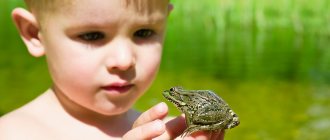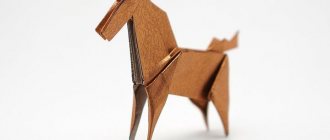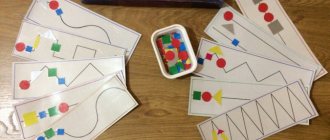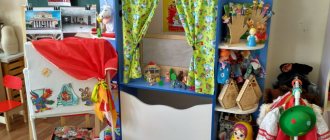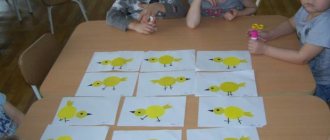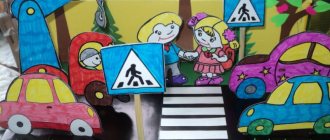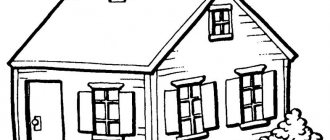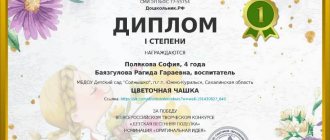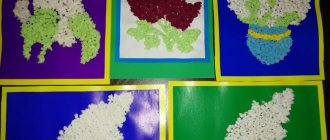How to make animal lotto yourself
Print the files, stick them on cardboard, cover the sheets with cards with tape, cut them out and you can start studying!
Educational lotto game for studying animals for children from 2,3,4,5,6 years old
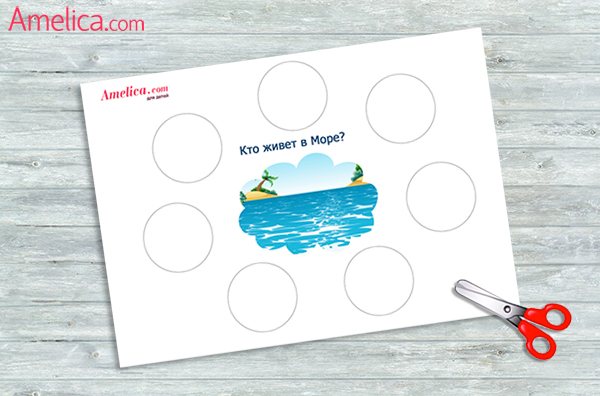
Educational lotto game for studying animals for children from 2,3,4,5,6 years old
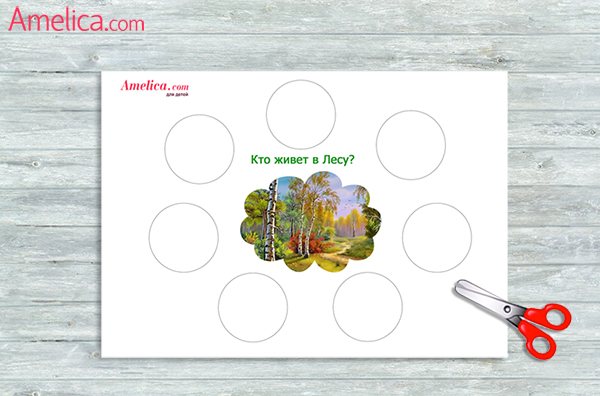
Educational lotto game for studying animals for children from 2,3,4,5,6 years old
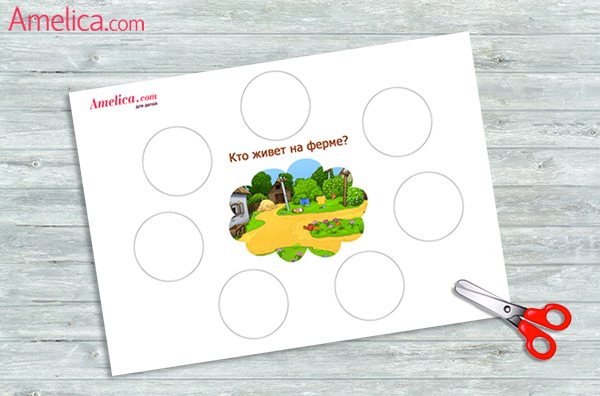
Educational lotto game for studying animals for children from 2,3,4,5,6 years old
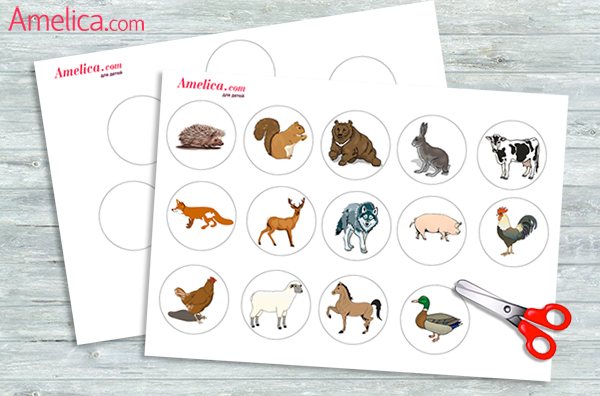
Educational lotto game for studying animals for children from 2,3,4,5,6 years old
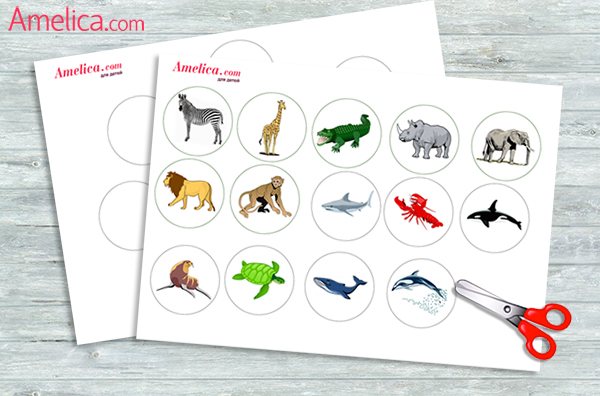
Educational lotto game for studying animals for children from 2,3,4,5,6 years old
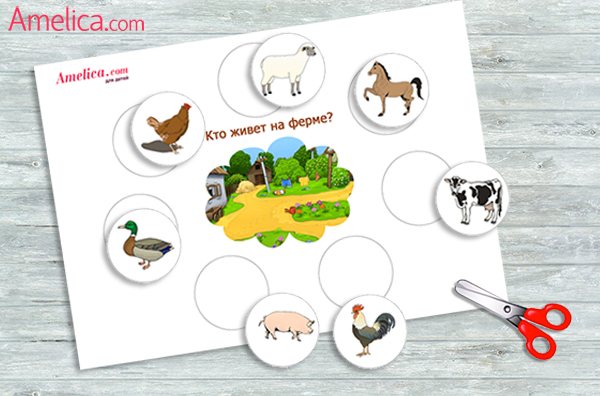
Educational lotto game for studying animals for children from 2,3,4,5,6 years old
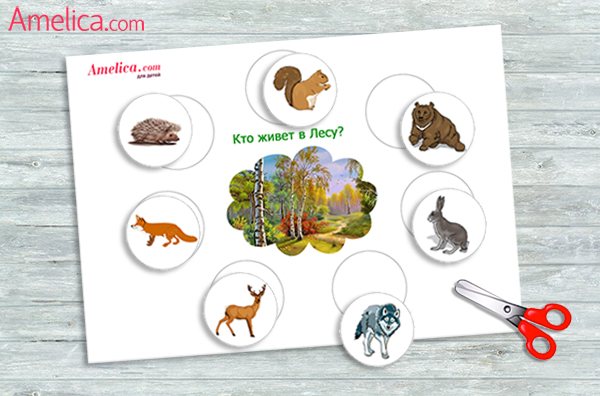
Educational lotto game for studying animals for children from 2,3,4,5,6 years old
Monday.
Let's start the week seriously! We will introduce the child to the topic “Who Lives Where!”
To begin with, I suggest you watch the presentation with your child, which you can download by clicking on the picture below.
It will be great if you can watch the presentation not only today, but several times throughout the week, so your child will better understand all the material (click on this picture ??? and you can download the presentation) .
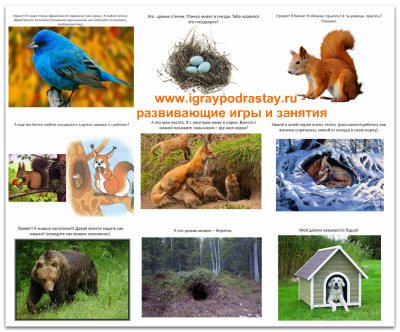
Game after the presentation.
The child will understand the topic of the presentation very well if, after watching it, you build houses for the toy animals that you find in the house.
You can build a den for the bear and put it there for winter hibernation (wrap it in a blanket, cover it with pillows, etc.).
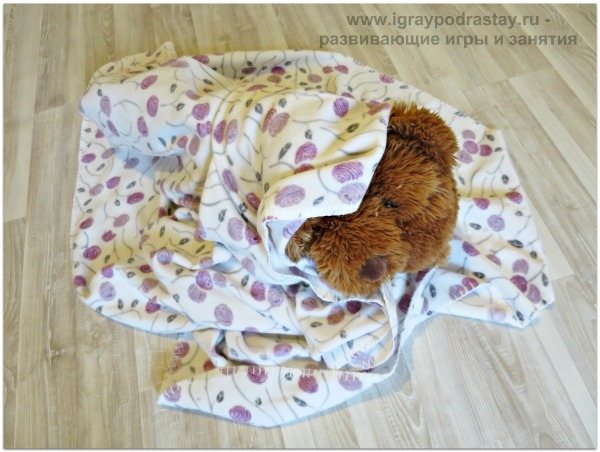
You can make a hole for a fox in the same way.
For a rubber fish, you can make a “sea” by pouring water into a basin.
If you think about it, you can come up with a “house” for any toy animal that you have at home!
The game “Build a house for an animal” is remarkable because children usually play it with great pleasure and it won’t take long to persuade them. At the same time, the child will not just play, but remember important and useful things: the bear’s house is called a den and he sleeps in it in winter, the fish lives in the water, etc.
How to learn the names of animals with your child
1) To begin with, an adult can simply tell the child about the habitats of animals, arrange the pictures correctly and name all the animals.
2) Then select any field and cards only related to it, invite the child to arrange them independently and name them.
3) Further complicate the classes, you can play lotto. The child himself chooses which animals he will collect, you take out the pictures from the bag, the child will name them and lay out the ones he needs on the field.
My son liked this game, he couldn’t even wait quietly for me to make it, he immediately joined the process. Look at the photo for yourself.
Good luck to you and your children in studying animals!
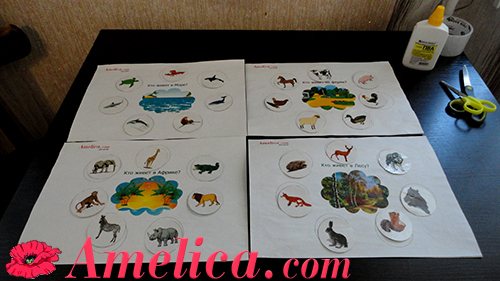
Educational game about animals - Who lives where?
didactic game “Who Lives Where”
Construct of joint educational activities
according to PM 02 Organization of various types of activities and communication of preschool children
specialty 44.02.01 Preschool education of the student group 33 “B” group
Date of:
DOO:
Kindergarten No. 73
Age group:
second youngest
Head of practice:
Methodist:
Educator:
Educational area:
cognitive development; artistic and aesthetic development, speech development
Form of organization:
group
Activities
: didactic game “Who lives where?”
Didactic task
: Teach children to group objects into pairs according to a given condition.
Game task
: play his favorite game with the little bear.
Game rules
: distribute the animals to their homes.
Game actions:
looking at pictures, saying words, matching animals.
Target:
developing children’s ability to correlate images of animals with their habitat, correctly naming the animal
Planned results:
Children show interest in joint play activities;
Children show interest in nature, respect for nature and animals;
Children are attentive, analyze and compare during play activities, and demonstrate the ability to distinguish colors;
Children recognize the image of the animal in the image;
Children have an idea of the appearance, lifestyle and dwellings of the inhabitants of nature.
| TASKS educational program | Tasks taking into account the individual characteristics of group students |
| Educational tasks : Cultivate interest in joint gaming activities. Develop an interest in animals. Developmental tasks: Develop attention and mental operations (analysis and comparison) during gaming activities. Enrich your vocabulary with the names of domestic and wild animals; To develop the ability to use generalizing words in speech. Training tasks: Expand children's understanding of the appearance of animals; Teach children to name animals, classify them into subgroups (wild and domestic). |
Principles of preschool education (FSES):
building educational activities based on the individual characteristics of each child, in which the child himself becomes active in choosing the content of his education, becomes the subject of education;
assistance and cooperation of children and adults, recognition of the child as a full participant (subject) of educational relations;
supporting children's initiative in various activities;
formation of cognitive interests and cognitive actions of the child in various types of activities;
age adequacy of preschool education (compliance of conditions, requirements, methods with age and developmental characteristics);
The topic is “Who Lives Where?” classes in kindergarten
SAMPLE SUMMARY OF A SUB-GROUP LESSON ON FORMATION OF CONNECTED SPEECH (SCHOOL PREPARATORY GROUP)
Municipal budgetary preschool educational institution kindergarten "Solnyshko" Nikiforovsky district, Tambov region
The topic is “Who Lives Where?”
prepared by - teacher - speech therapist Seredina Nelly Aleksandrovna, r.p. Dmitrievka
Objectives of the lesson: - To consolidate knowledge about wild animals, to introduce them to their homes. — Expand and activate vocabulary on the topics “Wild Animals”, “Winter”. — To develop practical skills in the correct use of relative adjectives, to consolidate the ability to coordinate nouns with adjectives. — Clarify the lexical meaning of the words: chest, casket, donut, tower, fly. — Develop skills of connected statements, cognitive abilities, imagination, creativity. — To form an ecological culture, to cultivate a sense of beauty.
Equipment:
Tape recorder, disc with recording of music by P.I. Tchaikovsky "Seasons"; items for the “winter forest”: artificial spruce trees, stumps, branches, cotton wool, snowflakes, white paper (road with hare tracks), a basket with nuts and cones, soft toys: bear, hare, squirrel, wolf, hedgehog, fox; flannelograms (boards) (one large and two small); painting material (wild animals, their homes, two or three Christmas trees, bushes, the sun, snowdrifts, clouds, snowflakes, etc.), bunny masks.
Lexical material:
- nouns: squirrel, bear, fox, hedgehog, hare, wolf, dwelling, woodpecker, hollow, hole, den, lair, crown; - adjectives: wild, squirrel, bear, fox, hare, wolf, clubfoot; - verbs: settle, insulate, hollow out.
Organizing time
Speech therapist. Today guests came to our lesson. Guess who? Jump-hop along the trees, Yes, nuts click-click. Children. A squirrel came to us.
After each answer, the speech therapist puts a picture of an animal on the flannelgraph (board).
Speech therapist. How did you guess? Children. The squirrel eats nuts. She is fast and jumps easily. Speech therapist. In summer he walks with a clubfoot, and in winter he sucks his paw. Children. Bear. Speech therapist. How do you understand the word clubfoot?
Children offer options for the lexical meaning of a given word, which are usually inaccurate. The speech therapist explains: “To walk with a clubfoot is to step with your heels apart, awkwardly, awkwardly.”
Speech therapist. Red-haired, cunning, steals chickens. Children. Fox. Speech therapist. What does cunning mean? Children. Smart. She is deceiving everyone. The fox hides her intentions (desires). Speech therapist. The creeper crawls, carrying needles on itself. Children. Hedgehog. Speech therapist. What else can you say about the hedgehog? Children. It has prickly needles. He eats apples. In winter it sleeps for a long time. Speech therapist. Long ear, ball of fluff, jumps deftly, loves carrots. Children. Hare.
Speech therapist. What else can you say about the hare? Children. He changes his fur coat; in winter it is white. The hare is afraid of everyone. Speech therapist. Who walks around angry and hungry in the cold winter? Children. Wolf.
Speech therapist. Why do I call these animals wild? Children. They live in the forest and are afraid of humans. These are untamed animals.
Message of the topic of the lesson : Speech therapist. Now we will continue the conversation about wild animals and their homes. How do you understand the word dwelling? Children offer options for the lexical meaning of a given word, which, as a rule, are inaccurate. The speech therapist explains: “Dwelling is a place where animals live away from human habitation.” You know the names of some animal dwellings. But we’ll see what they look like in a fairytale forest.
Main part
1. Conducting a psycho-gymnastic sketch
Music is playing
Speech therapist. Close your eyes and imagine everything I am going to tell you about. Winter is on the street. Everything around is white and white. The snow sparkles in the cold and crunches underfoot. We got on our skis and went into the forest. It's quiet in the forest. The branches of the trees became heavy with snow and sank down. The trees are like something out of a fairy tale: fluffy snowflakes cling to all the branches. The crown (the so-called upper part of the tree) is all dazzling white, only the trunk darkens against the background of fluffy snow. As soon as the breeze blows, the snow begins to fall off the branches. And it's so beautiful. Now, children, let's open our eyes. I'll tell you a secret that a small corner of a fairytale forest is located next to us.
The children, together with the speech therapist, go to another room where a “winter forest” has been created.
Take a closer look and listen. What do you see? What do you hear? Children. It's quiet here. There are green Christmas trees strewn with snowflakes. There are birds in the trees. A squirrel sits in a hollow.
The music stops. Speech therapist. Where? Show it to me. What is the name of her house? Children. Her house is called a hollow. Speech therapist. A squirrel cannot hollow out a hole for itself. Where does this hollow come from? How do you think? Children. Another squirrel lived there. A squirrel found a home in an old tree. Speech therapist. Squirrels settle in the hollow left by the woodpecker. They insulate it with moss, dry leaves and grass. (He opens the basket, overturns it, nuts and small pine cones roll out in the “snow.”) Oh! What have I done. Where do you think this comes from? Children. These are squirrel reserves for the winter. She collected it herself. Speech therapist. Take a nut or cone and place it on your palm. Consider them.
2. Carrying out finger exercises and exercises to prevent visual impairment
Speech therapist. Let's play with nuts (cones). Children squeeze nuts (cones) into their fists (5-10 times), roll them between their palms (up and down, left and right), make circular movements on their palms, then extend their right arms, hold these objects with their thumb and forefinger and slowly move their arms away right, left, make circular movements with their hands and carefully follow the movement of the object with their eyes, without turning their heads.
Speech therapist. You did very well. Place the nuts and cones in a basket and leave them for the squirrel. Now look, what is this? (Puts out a picture.) Speech therapist. Guys, look, what is this? Children. This is a hole. We see the fox's tail. This is the fox's house. Speech therapist. This is a fox hole. Let's repeat the name of the fox's house. Children pronounce the sentence in chorus and individually. Speech therapist. What is the name of the bear's home? Children. Den. Speech therapist. Let's fantasize and imagine how a bear builds a den? Children. A large tree fell and the bear crawled under it. It's a big hole with branches on top. Speech therapist. I accept your answers and agree with you in many respects: the bear makes a den in a large hole, always in a dry place, along an upturned tree with roots, and falls asleep there. Where do you think the bear is located in our “forest”?
The children point to a large “snowdrift”. Speech therapist. But we won’t disturb the bear; let him sleep in his den. Who else sleeps in winter? Children. Hedgehog. Speech therapist. What kind of home does a hedgehog have? Children. He sleeps in the leaves. Speech therapist. Hedgehogs sleep for six months. They crawl under a pile of leaves, grass, branches, and sometimes under the roots of old trees. Now look, what are these traces? (Puts out a picture.) Children. These are traces of a fox and a hare. Speech therapist. Right. Now we will turn into bunnies and jump in the rabbit's tracks. I think they will lead us to the hare's house.
3. Dynamic pause Children put on hats with ears and jump in the rabbit's tracks. Speech therapist. Where do you think the hare is? Why is he not in his home? Children. The hare ran away. He's afraid of everyone. He doesn't have a home. Speech therapist. Hares do not build permanent homes for themselves. They are resting, sleeping under a bush. In winter they can hide in a snow hole. The holes and bushes are different every time. Let's get away from this bush. Maybe the hare got scared of us and that’s why it ran away. The “bunny” children jump to another “tree” and take off their hats. Speech therapist. What animal's home have we not named? Children. We did not name the wolf's home. Speech therapist. The wolf's home is called a lair - a small hole, there is a lot of grass, leaves, and twigs in it. From above it is covered with branches, old twigs, so the snow does not fall into the hole. The wolf in the den sleeps, hides, rests. What is the name of a wolf's home?
Children answer in chorus and individually. Speech therapist. Our journey has now ended. It's time to return to the group. What did you like about our “forest”, on our journey? Children. The hollow in which the squirrel lives. How we turned into bunnies. The children say goodbye to the “forest” and go to another room. Speech therapist. Children, go to the table, take the drawn homes of wild animals and attach the house of each animal to the board. Now you need to answer my questions one by one in a complete sentence. Where does the fox live? Children. The fox lives in a hole. Speech therapist. So whose hole is this? Children. This is a fox hole. Speech therapist. Where does the squirrel live? Children. The squirrel lives in a hollow. Speech therapist. Whose hollow? Children. This is a squirrel hollow. Speech therapist. Where does the bear live? Children. The bear lives in a den. Speech therapist. Whose den is this? Children. This is a bear's den. Speech therapist. Where does the hare live? Children. The hare has no home. He lives under a bush. Speech therapist. Where does the hedgehog live? Children. The hedgehog hides for the winter in dry leaves and grass. Speech therapist. Guys, I propose to create a fairy forest on the board. Children take picture material (Christmas trees, snowflakes, clouds, etc.) and attach it. Speech therapist. I love. And you? Let's come up with a name for our picture. Children. We like it too. In the forest. Fairy forest. The forest is a home for animals. Result of the speech therapist lesson. Do you think it’s good for animals to live in the forest? Children. Fine. They feel comfortable there. The forest feeds them.
Speech therapist. How should people behave in the forest? Children. You cannot break anything in the forest or chase insects and animals. We must protect beauty. The forest must not be polluted. Speech therapist. You made me happy with your answers. Each of you is different in some way: Polina, Vika know a lot about animals; The answers to questions from Sasha and Egor were interesting; Dima spoke very interestingly about the bear’s home. You knew how to listen to your friends’ answers, you were friendly, so let’s give each other a smile when we say goodbye. Goodbye.
The story on the board remains in the group for 2-3 days. The teacher consolidates the studied material and works to form the psychological basis of speech.
